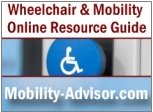Sleep Apnea Machine
A sleep apnea machine or CPAP therapy, which stand for continuous positive airway pressure, is the most commonly used treatment for individuals suffering from sleep apnea. Sleep apnea is a potentially dangerous sleep disorder that puts individuals at risk for heart problems, stroke, high blood pressure and other serious health issues.
People with sleep apnea unknowingly stop breathing during sleep and briefly awaken gasping for breath. Interruptions in breathing and sleep happen frequently every hour. If left untreated, the condition can ultimately cause life-threatening health issues.
CPAP Therapy
Therapy for sleep apnea involves using a CPAP machine to pump an ongoing flow of air into your lungs at night. This effectively prevents airways from collapsing so breathing is uninterrupted throughout the night. It's a non-invasive, painless treatment approach that is effective when used properly and consistently.
Sleep apnea equipment must be FDA approved and are only available by prescription. Their cost is usually covered by medical insurance policies, under durable medical equipment benefits. There may also be a few tax
benefits you can take advantage of since a CPAP machine is considered a
medical device.
CPAP Machine Components
Sleep apnea machines consist of three main parts. The body of the machine itself, (sizes vary, the size of a shoe-box is average), a cpap mask to deliver the air flow, and flexible tubing that connects the two.
The first CPAP machines appeared in the early 1980s and were big, noisy, and uncomfortable. Since then, manufacturers have continually refined and improved the apparatus. As a result, today there is a wide variety of sizes, styles, and options from which to choose.
The machines are now much lighter, quieter, and can be tailored to meet individual needs. Mask style, air pressure options, configuration, noise levels, and portability can be selected for optimal functionality and comfort.
This enhanced level of flexibility and choice is important in light of studies that show up to half of people with sleep apnea who are prescribed CPAP machines fail to use them consistently.
The data is highly concerning given the serious health issues that can result from sleep apnea.
Types of CPAP Machines
There are three types of sleep apnea machines that are prescribed.
- CPAP - This is the original type of breathing therapy delivers air at a constant pressure, whether you're inhaling or exhaling.
- Bi-Level - Also known as VPAP, these machines deliver different air pressure levels for when you inhale and exhale. The pressure is lower during exhaling.
- Auto PAP - The newer type of equipment features air that is delivered automatically and adjusts depending on the user's breathing patterns.
Features and options that are available with most CPAP equipment include:
- Smaller-sizes for easier travel and transport. Also, more compact equipment takes up less valuable space on your nightstand.
- Electrical-current adaptability enables some models to be used in different countries, as well as to function when connected to a car or boat battery.
- Variety of breathing masks that feature different sizes, styles, and materials. This enables individuals to find a mask that fits well and feels comfortable.
Advantages and Drawbacks of CPAP Machines
In addition to reducing your health risks, the benefits of using a sleep apnea machine can significantly improve the quality and quantity of your sleep. In turn, this leads to all the benefits a good nights sleep can bestow on your life...
- Feeling refreshed when you wake up
- Much less daytime sleepiness
- A lower risk of driving accidents
- Improved memory
- Better mood
The drawbacks of using a CPAP machine are relatively minor and most people will experience one of the following on awakening when they first start using the breathing equipment.
- Nasal congestion
- A runny nose
- Dry eyes
- Dry mouth
- Facial skin irritation
- Chest muscle discomfort
- Headache
These issues can be be relieved (and often prevented) by taking the time to choose the right mask. Any lingering discomfort can be treated with simple saline nasal sprays or eye drops or skin moisturizers. Adjusting the air pressure delivered by your machine (in consultation with your doctor) or adding nasal pillows can also help.
Although rarely seen, there is the possibility that dizziness, inner-ear problems, or heart rhythm changes may occur when you first start using your equipment. If you notice any of these symptoms, let your doctor know right away.
Related Information - Sleep Apnea Machine
More on CPAP Machines
CPAP Pillows
CPAP Supplies and Replacement Timing
What is Sleep Apnea?
Sleep Apnea Treatments
Sleep Apnea Pillow
Sleep Apnea Masks
Adjusting to Your CPAP Mask
CPAP Full Face Mask
CPAP Nasal Mask
Sleep Disorders
Benefits of Sleep
Share Sleep Tips Do you have a great tip to share with others who are struggling with sleep? What works for you might help someone else. |



